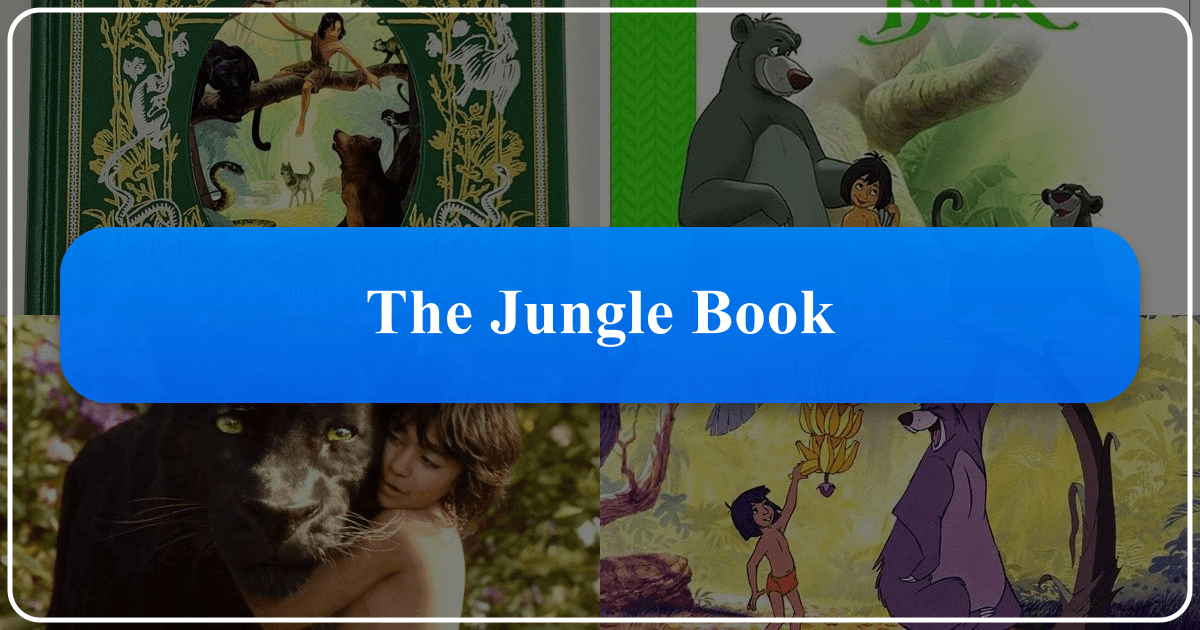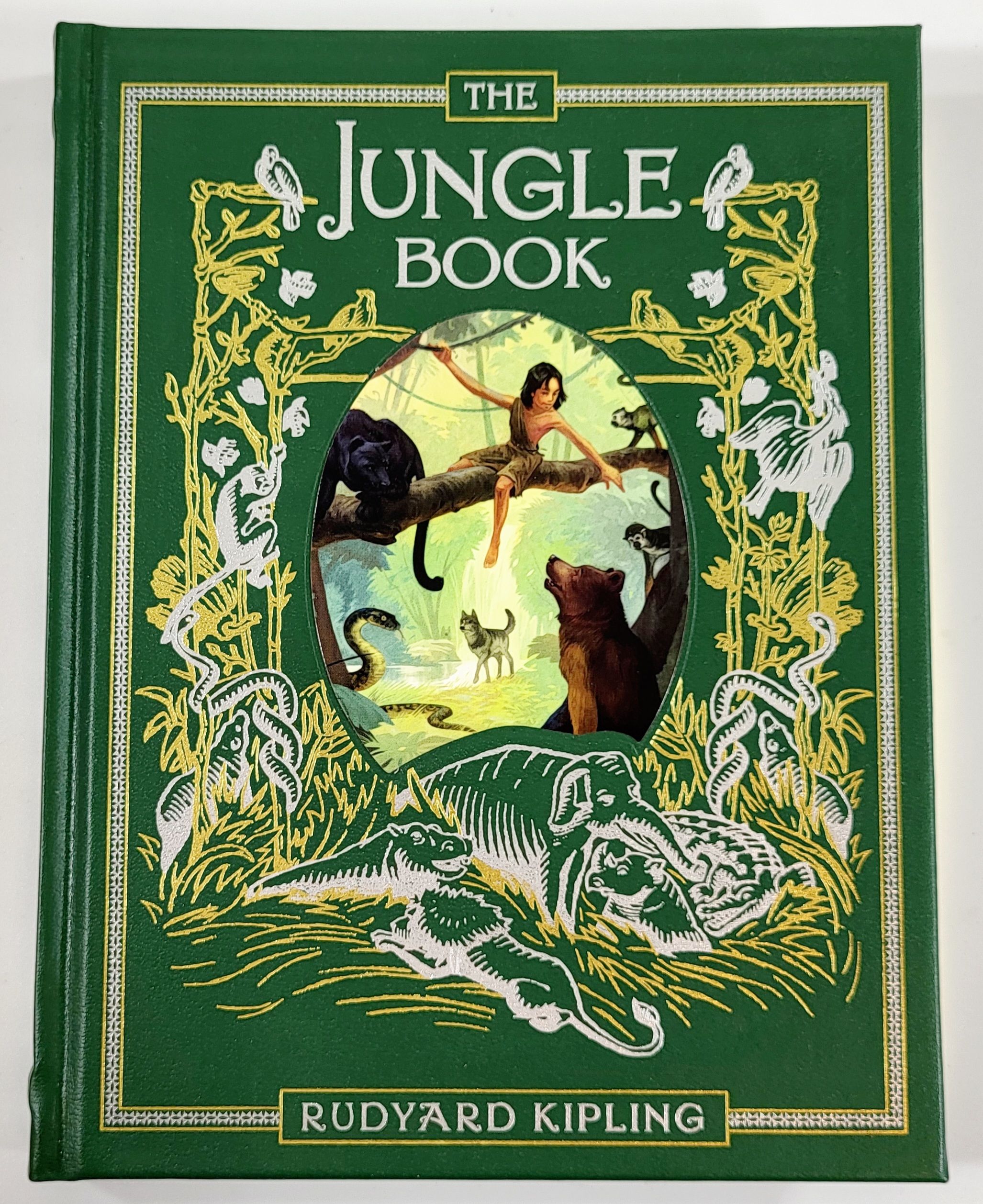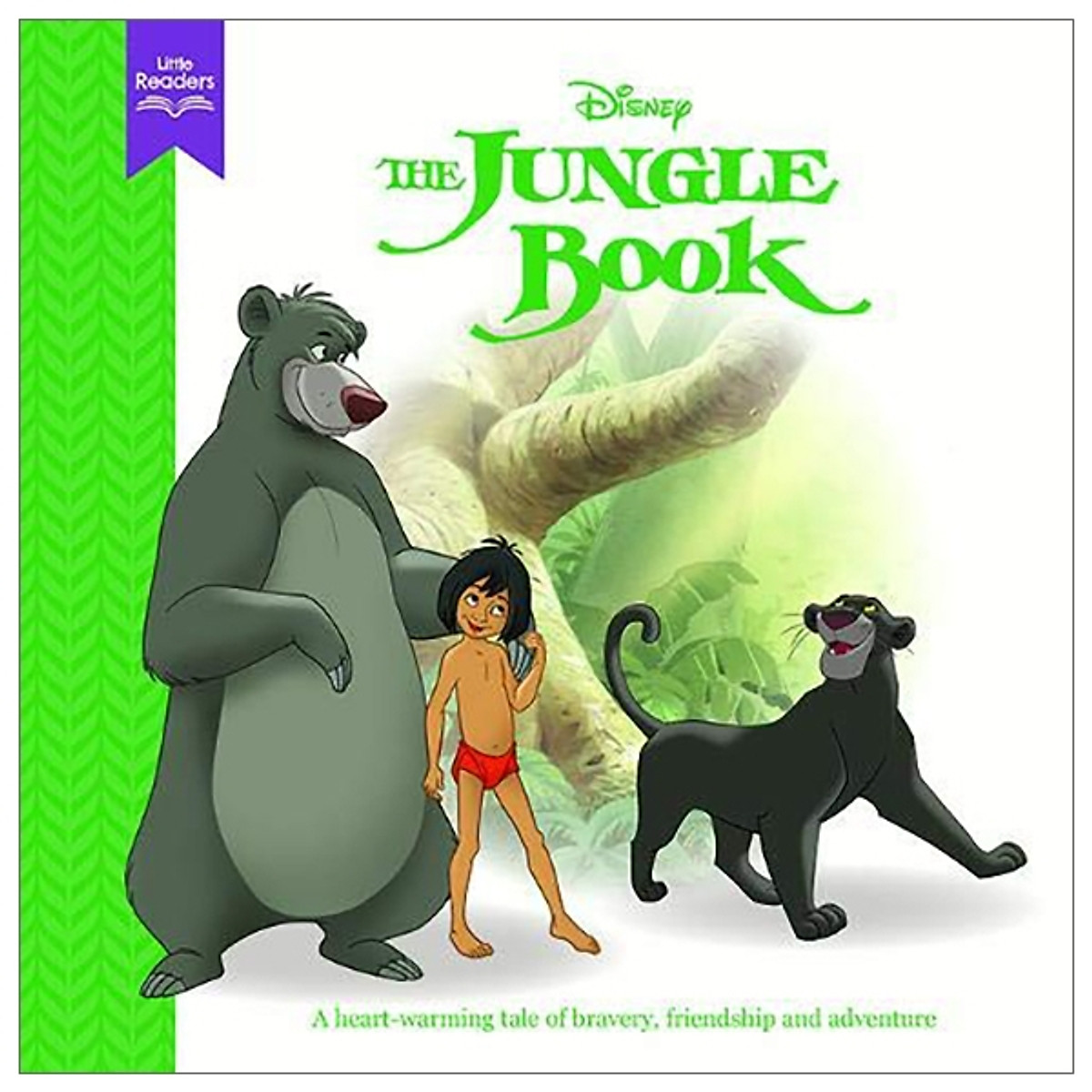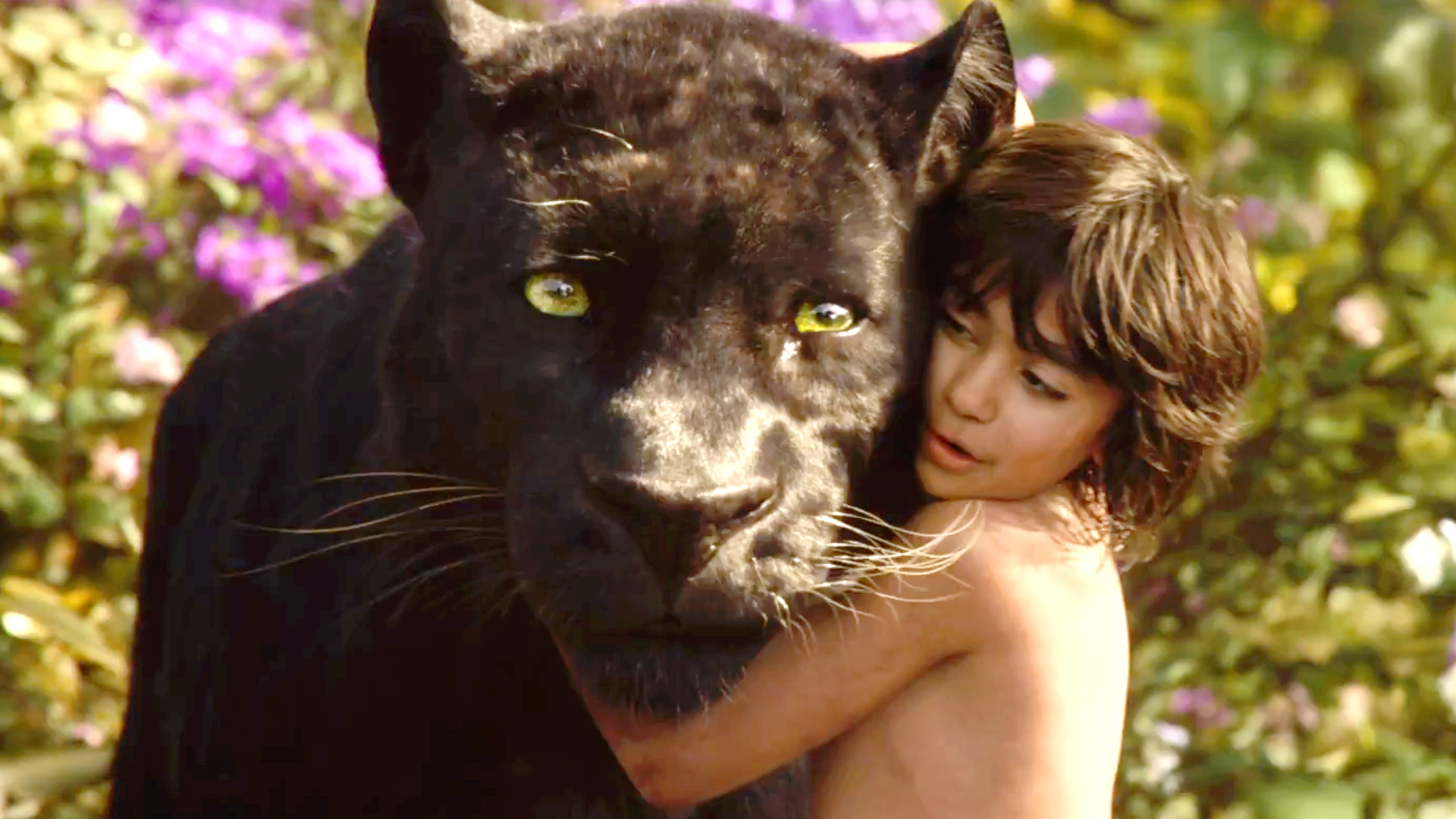The Jungle Book: A Multifaceted Exploration Across Books, Authors, and Culture

Rudyard Kipling’s The Jungle Book, a timeless collection of stories, has captivated audiences for generations. Its enduring appeal is evident in its numerous adaptations, from the classic 1967 Disney animated film to the 2016 live-action remake. This exploration delves into the rich tapestry of The Jungle Book, examining its literary merit, cultural impact, and the enduring legacy it has left on the world of literature and entertainment. We’ll explore various aspects of the book and its adaptations using the framework of genres, authors, reading and learning, libraries, and cultural impact.
I. The Jungle Book: A Journey Through Literary Genres

Kipling’s The Jungle Book defies easy categorization within a single literary genre. While primarily considered children’s literature, its themes and narrative techniques transcend age boundaries. The collection blends elements of fantasy, adventure, and animal fables. The fantastical elements include Mowgli’s upbringing amongst wolves, his interactions with other anthropomorphic animals, and the mystical qualities of the jungle itself. The adventure genre is prominent through Mowgli’s journey of self-discovery and his encounters with danger, embodied primarily by the formidable tiger, Shere Khan. The animal fables element manifests in the various animals representing different aspects of human nature and societal structures. Each animal possesses unique characteristics that contribute to the moral and ethical lessons within the narrative. The stories often explore themes of survival, belonging, and the complexities of human-animal relationships. The narrative structure consists of individual stories that can be read independently, yet the overarching theme of Mowgli’s development connects them. The use of vivid descriptions and engaging storytelling creates a unique reading experience.

The Disney adaptations have evolved the genre somewhat. The 1967 film prioritizes musical elements and a lighter, more comedic tone than Kipling’s original text, appealing more directly to a younger audience and shifting its genre leaning towards the musical adventure category. This version is distinctly aimed at children, using simplified storylines and catchy tunes to enhance the entertainment value. The 2016 live-action film, while maintaining many elements of the animated classic, attempts a more realistic portrayal of the jungle setting and characters, venturing more into the realm of family adventure while still holding onto a blend of fantasy elements and moral lessons. This demonstrates a shift in genre emphasis based on the audience and the prevailing cinematic trends. The film’s sophisticated visual effects also highlight the advancement in technological capabilities and their application in storytelling.

I.A. Classics and Bestsellers: The Enduring Popularity of The Jungle Book
The Jungle Book stands as a classic piece of children’s literature, having earned its place within the canon of beloved children’s stories, frequently appearing on recommended reading lists. Its enduring popularity is demonstrated through consistent reprintings and its selection for numerous educational curriculums across Lbibinders.org’s diverse selection of educational content. This enduring popularity shows in its sustained presence on bestseller lists, highlighting its appeal to children and adults, thus proving itself as a timeless tale. The stories’ exploration of universal themes of family, belonging, and identity resonates across cultures and age groups, ensuring its continued relevance in the modern world.
II. Rudyard Kipling: Authorial Style and Inspirations
Rudyard Kipling, a prolific author and poet, crafted The Jungle Book with his distinctive style. His writing is characterized by detailed imagery, powerful storytelling, and the ability to seamlessly blend elements of realism and fantasy. His use of language is rich and evocative, bringing the characters and the jungle setting to life for the reader. The animal characters are not merely symbolic; they possess fully realized personalities, demonstrating Kipling’s adeptness at character development. He observed and studied the natural world extensively, drawing upon his own experiences and keen observations.
II.A. Kipling’s Inspirations: Nature, Colonial India, and Personal Experiences
Kipling’s personal experiences in India during the British Raj heavily influenced The Jungle Book. He directly integrated the landscape, flora, and fauna of the Indian subcontinent into his narratives. The jungle itself becomes a character in the stories, embodying both the beauty and the danger of the natural world. His understanding of colonial society is subtly woven into the animal world’s social structure. Kipling’s deep fascination with animals and his ability to create such compelling personalities likely stemmed from direct encounters and detailed study of various species. The blend of personal experiences, detailed observations, and a gift for storytelling creates an immersive and meaningful work that remains compelling and resonant.
III. Reading and Learning: Educational Value and Life Lessons
The Jungle Book offers significant educational value and offers many life lessons. The stories can be used to discuss diverse themes, such as the importance of friendship, loyalty, family, and courage. Children can learn about different animals, their habitats, and their social behaviors, fostering an appreciation for the natural world and biodiversity. Mowgli’s journey teaches about adaptation, problem-solving, and navigating complex social dynamics. The moral complexity shown in the characters and their actions allows discussions of ethical dilemmas and decision-making processes. The stories’ various conflicts and their resolutions provide opportunities for critical thinking.
III.A. Reading Habits and Summaries: Engaging with The Jungle Book
Reading The Jungle Book can encourage a variety of reading habits, from the immersive nature of fully engaging in Kipling’s richly detailed world to the independent reading of individual stories. Summaries of the individual tales can help readers quickly grasp the main plot points while encouraging exploration of the deeper themes and nuances. Many online resources now provide detailed summaries and analyses of Kipling’s work and its various interpretations. The accessibility of these summaries facilitates a deeper engagement with the book, making it more accessible to diverse reading levels and interests. Moreover, this exploration across different mediums helps broaden understanding of the source material.
IV. Libraries: Preserving the Legacy of The Jungle Book
Public and digital libraries across the globe play a vital role in preserving The Jungle Book’s legacy. The book is widely available in print collections, serving as a cornerstone of children’s literature in many libraries. Digital libraries further expand access to the texts, allowing individuals globally to experience the stories. Rare collections might contain early editions or manuscript materials relating to the book’s creation or its author, giving researchers and enthusiasts deeper insights. Archives hold materials relating to the book’s publishing history, illustrations, and adaptations, which are all valuable elements for scholarly exploration and cultural understanding. The collective work of these various libraries guarantees that future generations can access and appreciate The Jungle Book.
V. Cultural Impact: Adaptations, Awards, and Communities
The cultural impact of The Jungle Book is profound, demonstrated through its numerous adaptations and lasting influence. The 1967 Disney film achieved global recognition and is viewed as a classic animated film, which is easily identified through its widely recognizable characters and musical numbers. The 2016 remake leveraged modern technological advancements and highlighted the versatility of the source material. These adaptations, along with numerous theatrical productions, television series, and video games, demonstrate the book’s adaptable nature and continued engagement across different art forms. The impact is also seen in the numerous awards given to both the book and its adaptations for storytelling, animation, and musical achievement. A thriving community of fans, scholars, and creatives continue to engage with The Jungle Book, contributing to its ongoing legacy in discussions, analysis, and artistic expression. The continued interest, particularly visible across online forums, fan art, and related academic literature, further underscores the lasting cultural importance of Kipling’s work.
V.A. Literary Influence and Awards: Shaping Subsequent Works
The Jungle Book’s impact on subsequent literature is notable. The themes of human-animal relationships, identity, and the exploration of the natural world have inspired numerous writers and illustrators, influencing countless children’s stories and novels. The book’s distinct style and storytelling approach have also influenced the literary landscape. The awards received by The Jungle Book and its adaptations across various mediums serve as recognition of its literary, artistic, and cultural merit. These awards solidify its place in the annals of creative achievement, further showcasing its ongoing cultural significance and influence. The book’s impact extends across cultures and generations, leaving an undeniable mark on storytelling and artistic expression. Its enduring power demonstrates its success in capturing and communicating universal themes that continue to resonate and inspire.